Interact and explore stunning astronomy imagery contextually in the sky within a digital universe provided by WorldWide Telescope. Menus in the upper right corner will allow you to change the background imagery and adjust the foreground image opacity. On select interactives, you can explore different images as well as toggle various filters and colors using the menu on the upper left. Have fun exploring!
Rubin Observatory - First Look Images
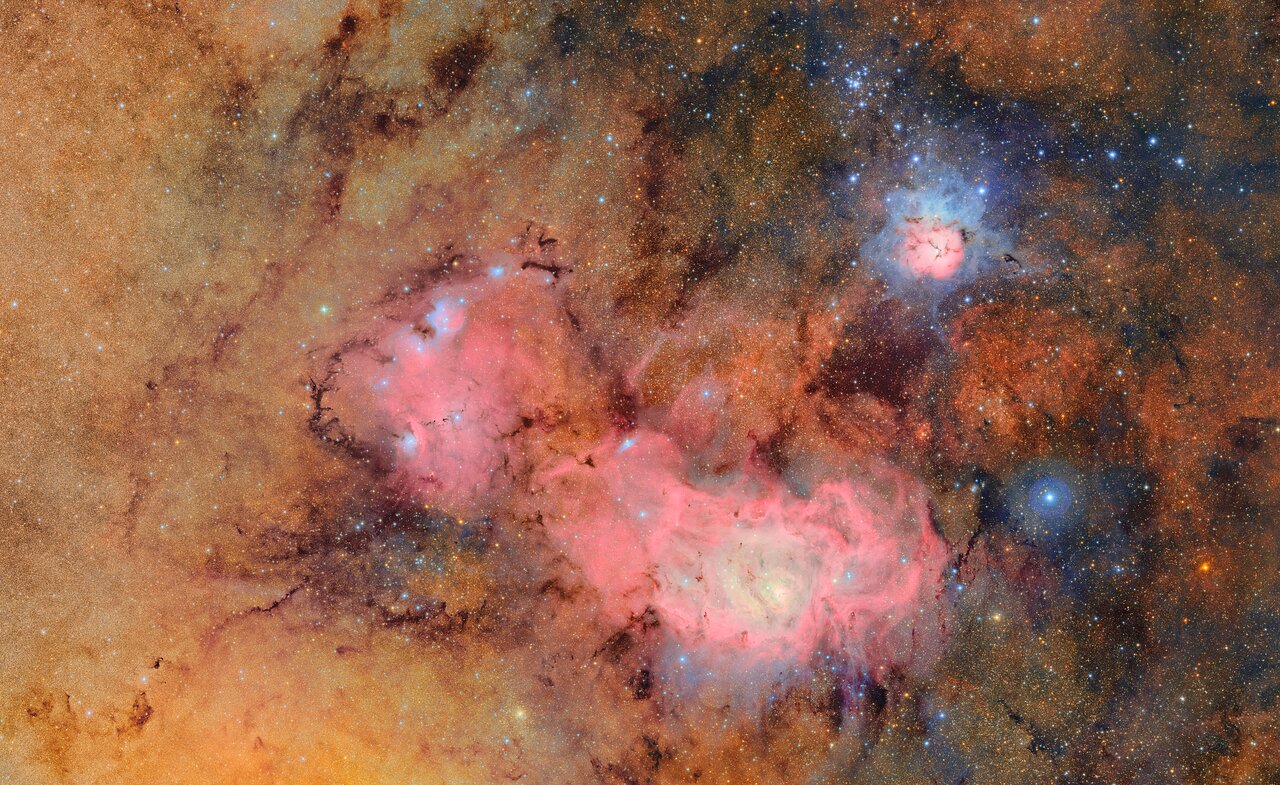 The NSF–DOE Vera C. Rubin Observatory released its first imagery on June 23, 2025 showing cosmic phenomena captured at an unprecedented scale. In just over 10 hours of test observations, the Rubin Observatory has already captured millions of galaxies and Milky Way stars and thousands of asteroids. The imagery is a small preview of Rubin Observatory's upcoming 10-year scientific mission to explore and understand some of the Universe's biggest mysteries.
The NSF–DOE Vera C. Rubin Observatory released its first imagery on June 23, 2025 showing cosmic phenomena captured at an unprecedented scale. In just over 10 hours of test observations, the Rubin Observatory has already captured millions of galaxies and Milky Way stars and thousands of asteroids. The imagery is a small preview of Rubin Observatory's upcoming 10-year scientific mission to explore and understand some of the Universe's biggest mysteries.
View Now
Sydney Radio Stars Catalog
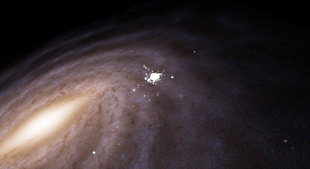 The Sydney Radio Star Catalogue is a catalogue of radio detected stars and stellar binary systems compiled and maintained by a team at the University of Sydney. Included stars have been detected in the radio at least once and are confirmed radio stars. In this interactive viewer, the Radio Stars are filterable by their observed frequencies. Toggle between 2D and 3D views for different perspectives in the sky and Milky Way galaxy, respectively. Hover over a unique star to see its name and distance. Crossfade between optical (visible light) and radio wavelengths in the 2D sky. Zoom in both modes and then zoom some more.
The Sydney Radio Star Catalogue is a catalogue of radio detected stars and stellar binary systems compiled and maintained by a team at the University of Sydney. Included stars have been detected in the radio at least once and are confirmed radio stars. In this interactive viewer, the Radio Stars are filterable by their observed frequencies. Toggle between 2D and 3D views for different perspectives in the sky and Milky Way galaxy, respectively. Hover over a unique star to see its name and distance. Crossfade between optical (visible light) and radio wavelengths in the 2D sky. Zoom in both modes and then zoom some more.
View Now- Orion Nebula
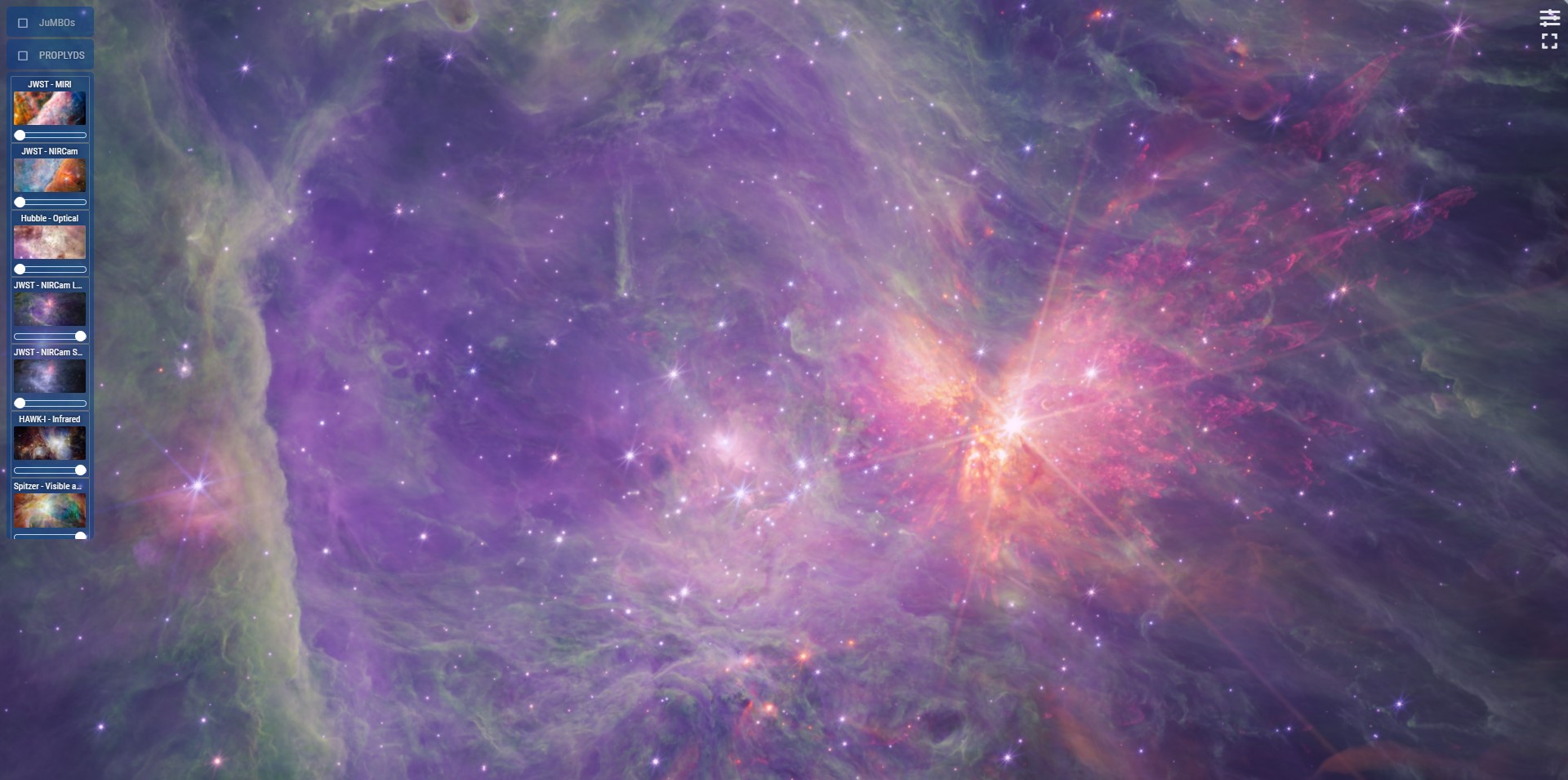 The Orion Nebula is one of the most scrutinized and photographed objects in the night sky and is among the most intensely studied celestial features. This nebula has revealed much about the process of how stars and planetary systems are formed from collapsing clouds of gas and dust. Astronomers have directly observed protoplanetary disks and brown dwarfs within the nebula, intense and turbulent motions of the gas, and the photo-ionizing effects of massive nearby stars in the nebula.
The Orion Nebula is one of the most scrutinized and photographed objects in the night sky and is among the most intensely studied celestial features. This nebula has revealed much about the process of how stars and planetary systems are formed from collapsing clouds of gas and dust. Astronomers have directly observed protoplanetary disks and brown dwarfs within the nebula, intense and turbulent motions of the gas, and the photo-ionizing effects of massive nearby stars in the nebula.
View Now
- Fermi Gamma Ray Pulsar
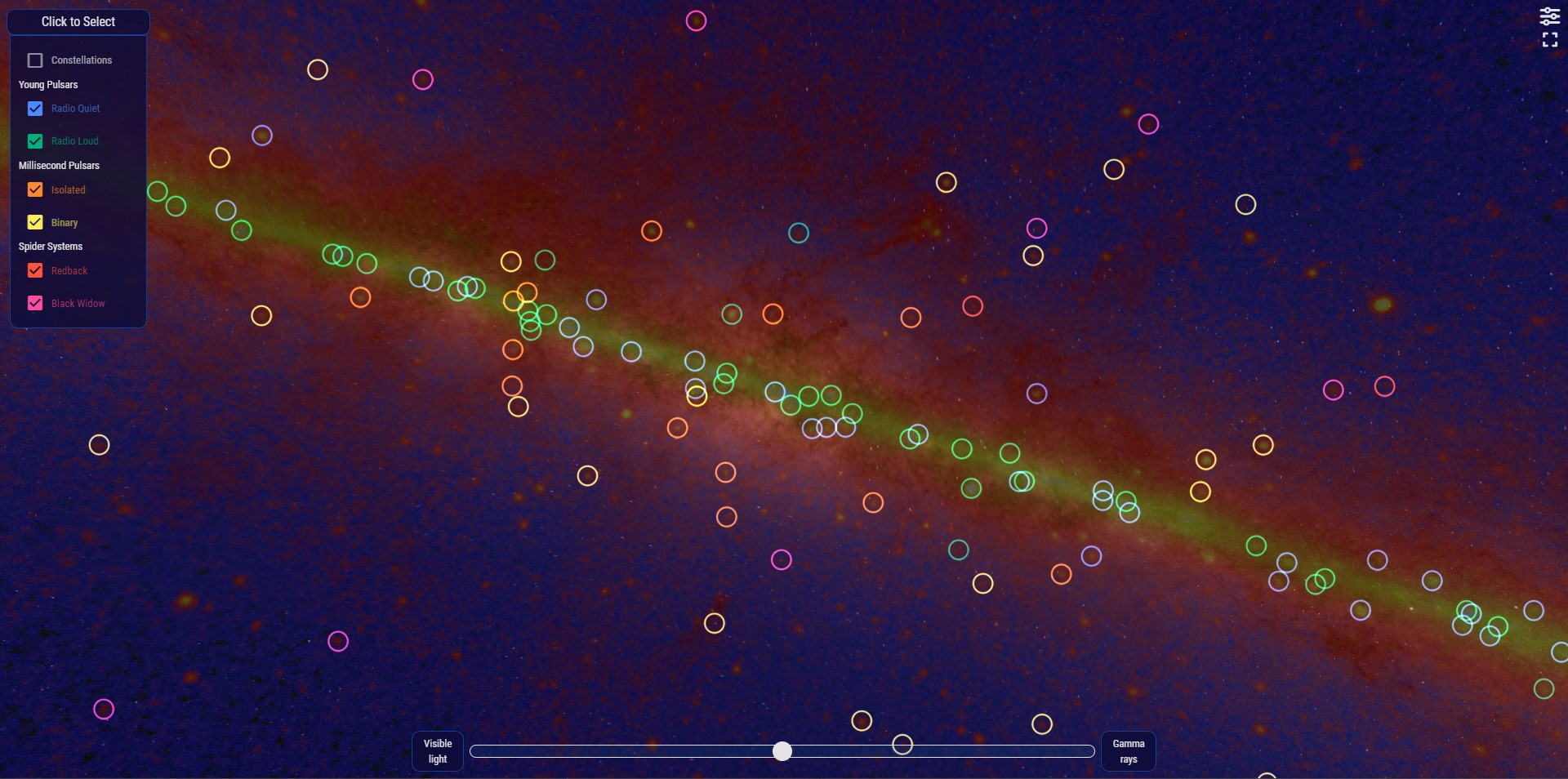 Before NASA's Fermi Gamma-ray Space Telescope launched in 2008, only a handful of pulsars, including the Crab, Vela, and Geminga, were known to emit gamma rays, the highest-energy form of light. Shown here are 294 gamma-ray pulsars detected by Fermi. Young pulsars, formed when massive stars explode, are the slowest rotators, typically spinning about 10 times a second. Paradoxically, their older siblings, called millisecond pulsars (MSPs), spin much faster, up to hundreds of times a second, thanks to the effects of a stream of matter pulled from a companion star. In spider systems, the companion is all but consumed. The most energetic spiders may fully evaporate their companions, leaving behind only an isolated MSP. Studying pulsars provides insights into the interplay of gravity, radiation, and magnetic fields with matter in the most extreme state we can observe directly.
Before NASA's Fermi Gamma-ray Space Telescope launched in 2008, only a handful of pulsars, including the Crab, Vela, and Geminga, were known to emit gamma rays, the highest-energy form of light. Shown here are 294 gamma-ray pulsars detected by Fermi. Young pulsars, formed when massive stars explode, are the slowest rotators, typically spinning about 10 times a second. Paradoxically, their older siblings, called millisecond pulsars (MSPs), spin much faster, up to hundreds of times a second, thanks to the effects of a stream of matter pulled from a companion star. In spider systems, the companion is all but consumed. The most energetic spiders may fully evaporate their companions, leaving behind only an isolated MSP. Studying pulsars provides insights into the interplay of gravity, radiation, and magnetic fields with matter in the most extreme state we can observe directly.
View Now
James Webb Space Telescope Image Collection
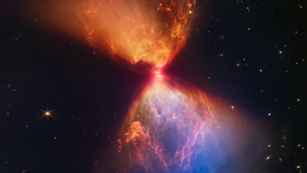 The James Webb Space Telescope (JWST) has begun observing the universe in its first year of data collection. Explore all the JWST images released so far in context of the night sky and check back for updates as new observations are released.
The James Webb Space Telescope (JWST) has begun observing the universe in its first year of data collection. Explore all the JWST images released so far in context of the night sky and check back for updates as new observations are released.
View Now33 years of Hubble
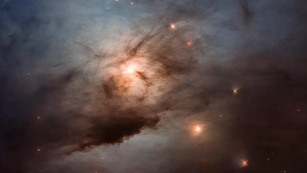 The Hubble Space Telescope launched on April 24th, 1990 has made remarkable discoveries and captured breathtaking images of the universe. Its scientific achievements include uncovering strong evidence that galaxies are embedded in halos of dark matter, refining our understanding of the universe’s age and expansion, and capturing images of stars’ birth and death.
The Hubble Space Telescope launched on April 24th, 1990 has made remarkable discoveries and captured breathtaking images of the universe. Its scientific achievements include uncovering strong evidence that galaxies are embedded in halos of dark matter, refining our understanding of the universe’s age and expansion, and capturing images of stars’ birth and death.
View Now- JWST First Year of Science
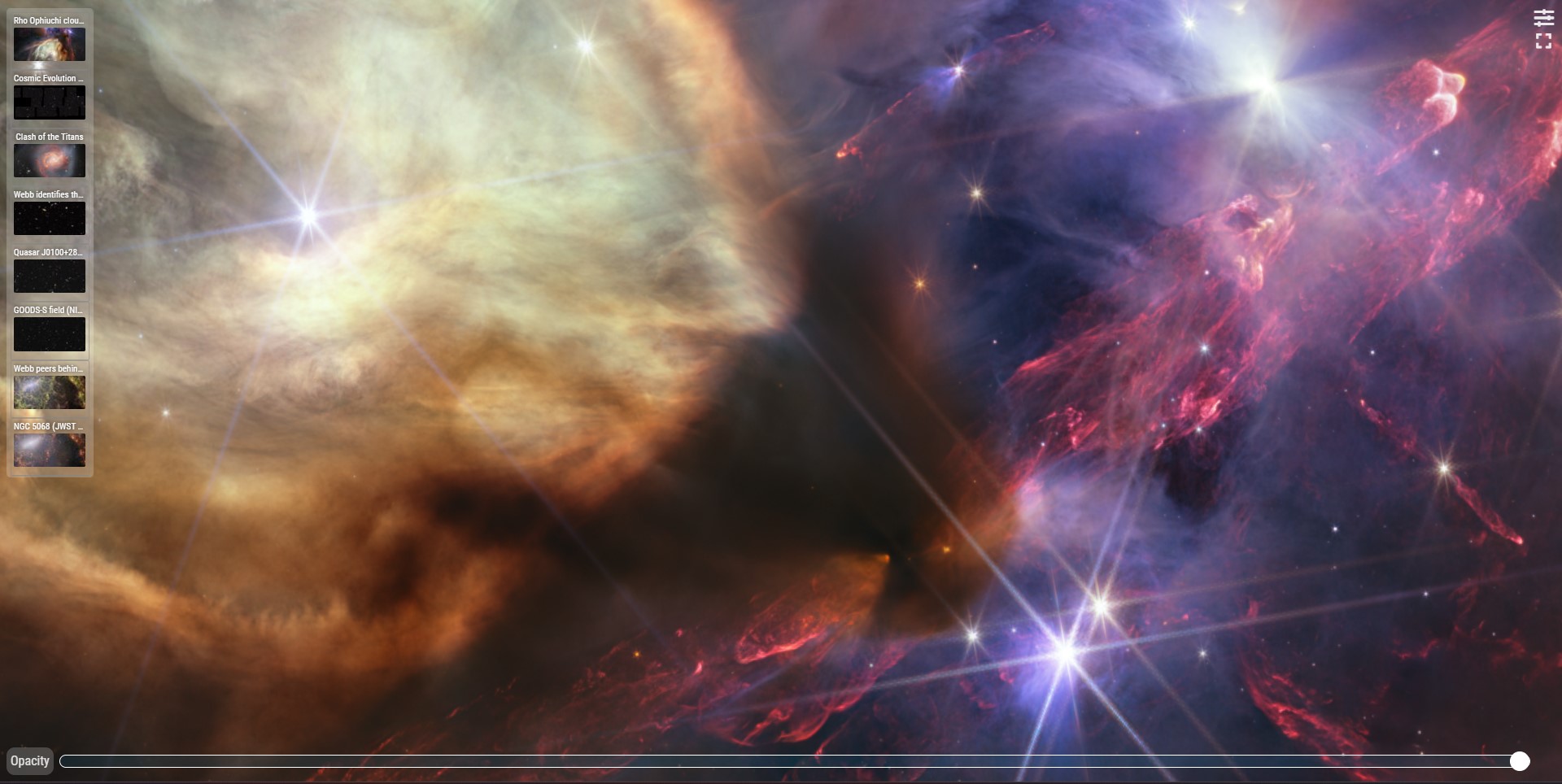 Celebrate the First Year of Science with JWST! Launched on Dec 25th, 2021 - after a month long deployment and several months of precise mirror alignment and instrument calibration, the first images were released to the public on July 11th and 12th. Many images have been released in the year since and can be explored here interactively.
Celebrate the First Year of Science with JWST! Launched on Dec 25th, 2021 - after a month long deployment and several months of precise mirror alignment and instrument calibration, the first images were released to the public on July 11th and 12th. Many images have been released in the year since and can be explored here interactively.
View Now
- Pillars of Creation
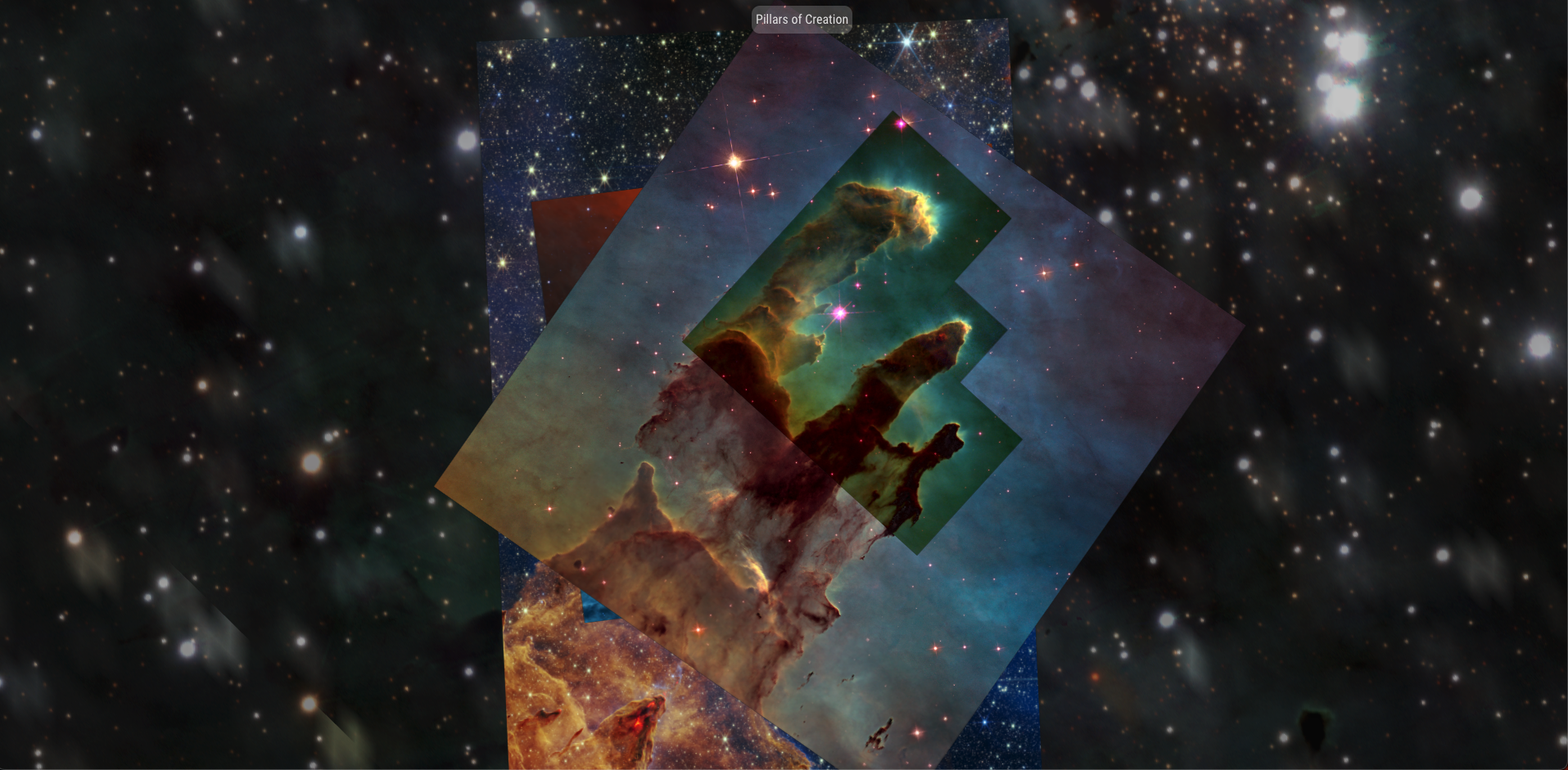 The Pillars of Creation, located in the Eagle Nebula, are remarkable structures of interstellar gas and dust. These towering pillars are a stellar nursery, where new stars form from the forces of gravity and radiation. Spanning light-years in length, they showcase the illuminated gas and dark, dense regions influenced by the intense ultraviolet light emitted by nearby massive stars. The Pillars of Creation symbolize the continuous cycle of stellar birth and death, offering a captivating reminder of the immense and magnificent universe we inhabit.
The Pillars of Creation, located in the Eagle Nebula, are remarkable structures of interstellar gas and dust. These towering pillars are a stellar nursery, where new stars form from the forces of gravity and radiation. Spanning light-years in length, they showcase the illuminated gas and dark, dense regions influenced by the intense ultraviolet light emitted by nearby massive stars. The Pillars of Creation symbolize the continuous cycle of stellar birth and death, offering a captivating reminder of the immense and magnificent universe we inhabit.
View Now
- Cassiopeia A
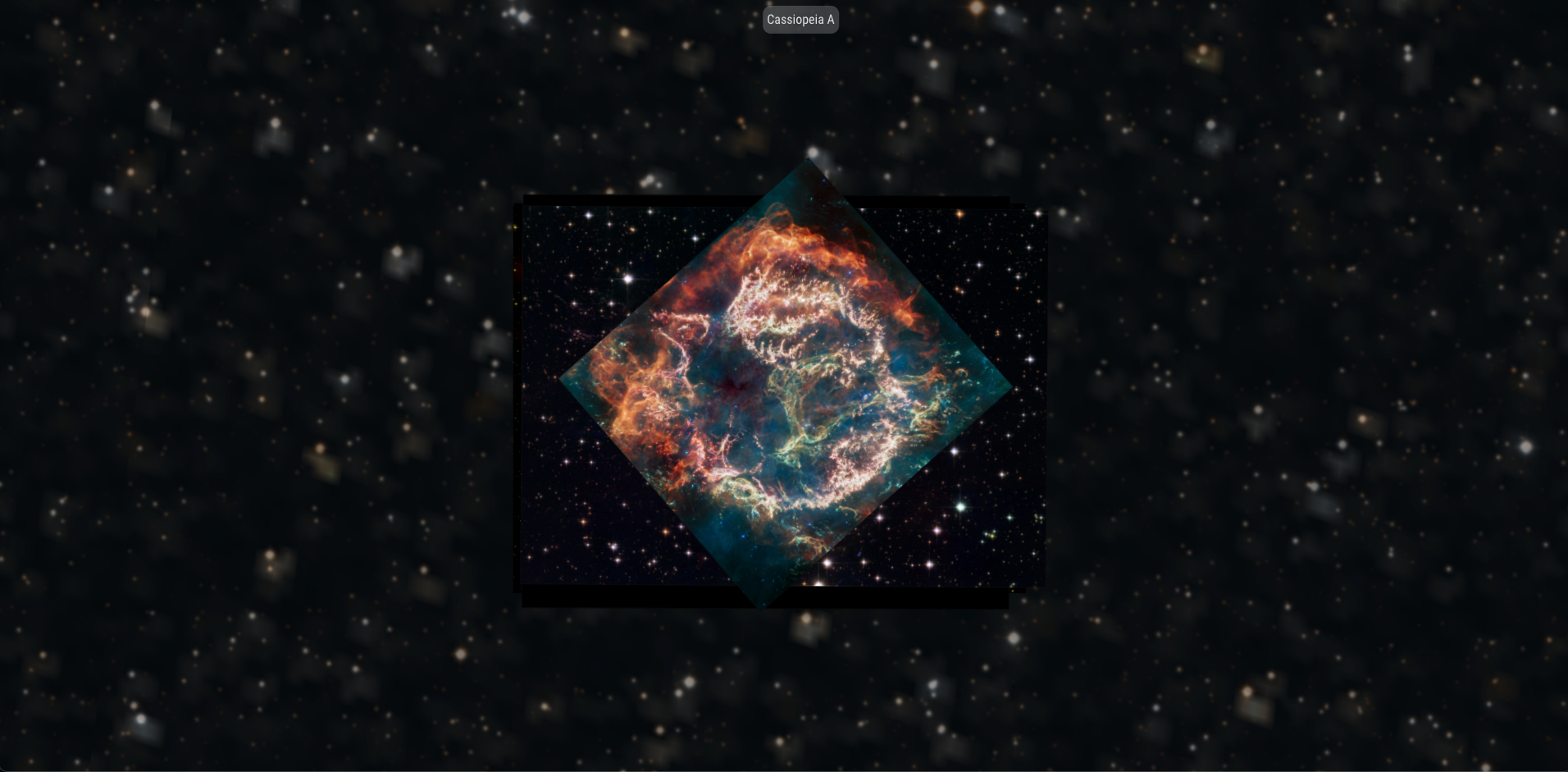 Cassiopeia A is a celestial object that has captivated astronomers for decades. It is the remnant of a once-massive star that met its explosive demise in a supernova event approximately 11,000 years ago. Located in the constellation Cassiopeia, this stellar remnant showcases intricate structures formed by the shockwaves from the explosion. Its study unveils the complexities of stellar evolution and reminds us of the immense power and beauty hidden within our vast universe.
Cassiopeia A is a celestial object that has captivated astronomers for decades. It is the remnant of a once-massive star that met its explosive demise in a supernova event approximately 11,000 years ago. Located in the constellation Cassiopeia, this stellar remnant showcases intricate structures formed by the shockwaves from the explosion. Its study unveils the complexities of stellar evolution and reminds us of the immense power and beauty hidden within our vast universe.
View Now Messier 16: Pillars of Creation
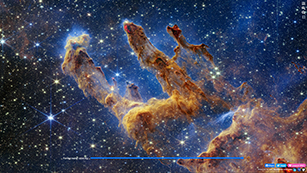 The James Webb Space Telescope has captured a lush, highly detailed landscape – the iconic Pillars of Creation – where new stars are forming within dense clouds of gas and dust. The three-dimensional pillars look like majestic rock formations, but are far more permeable. These columns are made up of cool interstellar gas and dust that appear – at times – semi-transparent in near-infrared light. These can be compared to the visible and infrared imagery observed by the Hubble Space Telescope.
The James Webb Space Telescope has captured a lush, highly detailed landscape – the iconic Pillars of Creation – where new stars are forming within dense clouds of gas and dust. The three-dimensional pillars look like majestic rock formations, but are far more permeable. These columns are made up of cool interstellar gas and dust that appear – at times – semi-transparent in near-infrared light. These can be compared to the visible and infrared imagery observed by the Hubble Space Telescope.
View NowNGC 6357: The Lobster Nebula
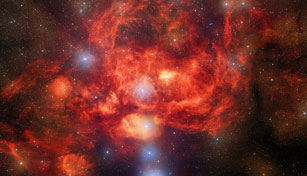 This image, taken by astronomers using the US Department of Energy-fabricated Dark Energy Camera on the Víctor M. Blanco 4-meter Telescope at Cerro Tololo Inter-American Observatory, a Program of NSF’s NOIRLab, captures the star-forming nebula NGC 6357, which is located 8000 light-years away in the direction of the constellation Scorpius. This image reveals bright, young stars surrounded by billowing clouds of dust and gas inside NGC 6357, which is also known as the Lobster Nebula.
This image, taken by astronomers using the US Department of Energy-fabricated Dark Energy Camera on the Víctor M. Blanco 4-meter Telescope at Cerro Tololo Inter-American Observatory, a Program of NSF’s NOIRLab, captures the star-forming nebula NGC 6357, which is located 8000 light-years away in the direction of the constellation Scorpius. This image reveals bright, young stars surrounded by billowing clouds of dust and gas inside NGC 6357, which is also known as the Lobster Nebula.
View NowJames Webb Space Telescope: First Images
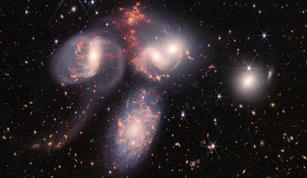 View the first images from the world’s largest and most powerful space telescope, released on July 12, 2022. Explore several views of Stephan's Quintet, SMACS 0723, the Southern Ring Nebula, and the Carina Nebula from the James Webb Space Telescope as it begins its mission to unfold the infrared universe.
View the first images from the world’s largest and most powerful space telescope, released on July 12, 2022. Explore several views of Stephan's Quintet, SMACS 0723, the Southern Ring Nebula, and the Carina Nebula from the James Webb Space Telescope as it begins its mission to unfold the infrared universe.
View Now30 Doradus: The Tarantula Nebula
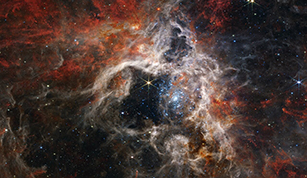 Thousands of never-before-seen young stars are spotted in a stellar nursery called 30 Doradus, captured by the NASA/ESA/CSA James Webb Space Telescope. Nicknamed the Tarantula Nebula for the appearance of its dusty filaments in previous telescope images, the nebula has long been a favourite for astronomers studying star formation. In addition to young stars, Webb reveals distant background galaxies, as well as the detailed structure and composition of the nebula’s gas and dust.
Thousands of never-before-seen young stars are spotted in a stellar nursery called 30 Doradus, captured by the NASA/ESA/CSA James Webb Space Telescope. Nicknamed the Tarantula Nebula for the appearance of its dusty filaments in previous telescope images, the nebula has long been a favourite for astronomers studying star formation. In addition to young stars, Webb reveals distant background galaxies, as well as the detailed structure and composition of the nebula’s gas and dust.
View NowCEERS Epoch 1: Wide View of Early Universe.
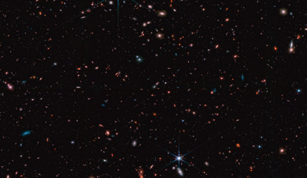 Two new images from NASA’s James Webb Space Telescope show what may be among the earliest galaxies ever observed. Both images include objects from more than 13 billion years ago, and one offers a much wider field of view than Webb’s First Deep Field image, which was released amid great fanfare July 12. The images represent some of the first out of a major collaboration of astronomers and other academic researchers teaming with NASA and global partners to uncover new insights about the universe.
Two new images from NASA’s James Webb Space Telescope show what may be among the earliest galaxies ever observed. Both images include objects from more than 13 billion years ago, and one offers a much wider field of view than Webb’s First Deep Field image, which was released amid great fanfare July 12. The images represent some of the first out of a major collaboration of astronomers and other academic researchers teaming with NASA and global partners to uncover new insights about the universe.
View NowThe Cartwheel Galaxy: Interacting Galaxies
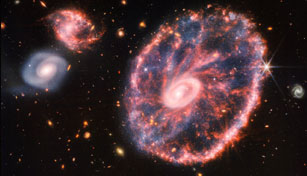 Explore the Cartwheel Galaxy with a composite picture in both near-infrared and mid-infrared taken by the James Webb Space Telescope. The Cartwheel Galaxy is a result of a galactic collision that occurred about 400 million years ago. The shockwave from the collision has pushed gas out from the center to create a ring of star formation around the galaxy.
Explore the Cartwheel Galaxy with a composite picture in both near-infrared and mid-infrared taken by the James Webb Space Telescope. The Cartwheel Galaxy is a result of a galactic collision that occurred about 400 million years ago. The shockwave from the collision has pushed gas out from the center to create a ring of star formation around the galaxy.
View NowMessier 74 (NGC 628): The Phantom Galaxy
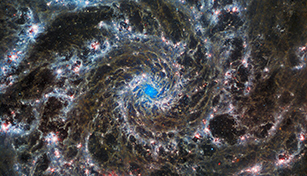 Interact with the Phantom Galaxy in different wavelengths of infrared light with imagery from the James Webb Space Telescope. The infrared images reveal the very detailed gas and dust spiral arms of the galaxy. Toggle different filters and adjust color and opacity to explore the Phantom Galaxy’s complexity.
Interact with the Phantom Galaxy in different wavelengths of infrared light with imagery from the James Webb Space Telescope. The infrared images reveal the very detailed gas and dust spiral arms of the galaxy. Toggle different filters and adjust color and opacity to explore the Phantom Galaxy’s complexity.
View NowNGC 3324: Star-forming region in the Carina Nebula
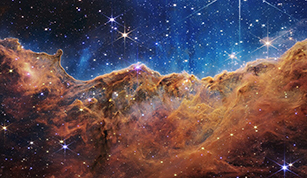 The James Webb Space Telescope’s view of the Carina Nebula captures the edge of a giant cavity in space that has been carved out by the intense radiation of young stars. This radiation is also slowly eroding away the gaseous cliffs. Adjust filters and colors to view details of the gas and stars forming within.
The James Webb Space Telescope’s view of the Carina Nebula captures the edge of a giant cavity in space that has been carved out by the intense radiation of young stars. This radiation is also slowly eroding away the gaseous cliffs. Adjust filters and colors to view details of the gas and stars forming within.
View Now

